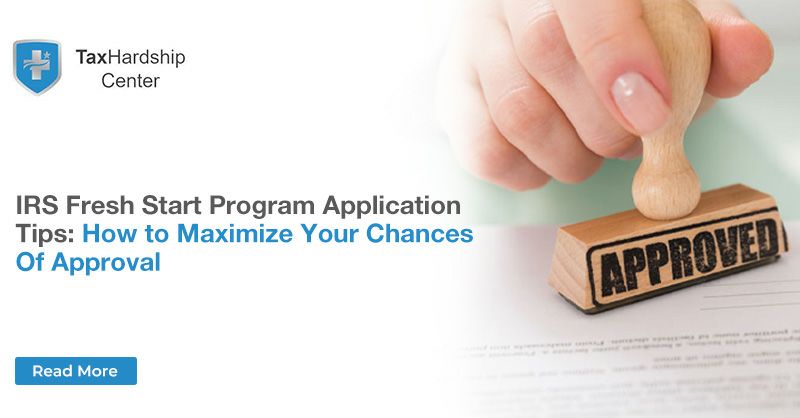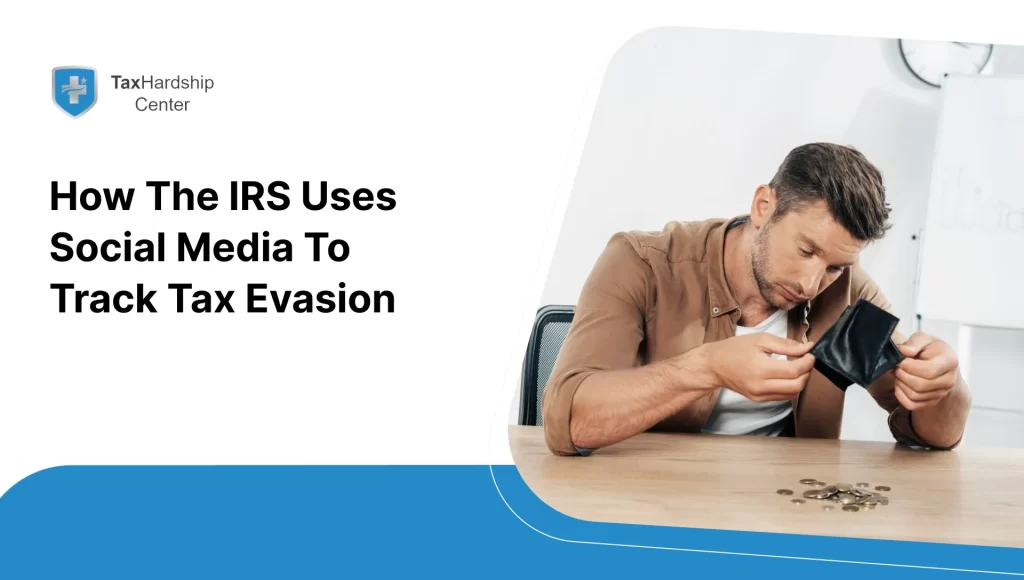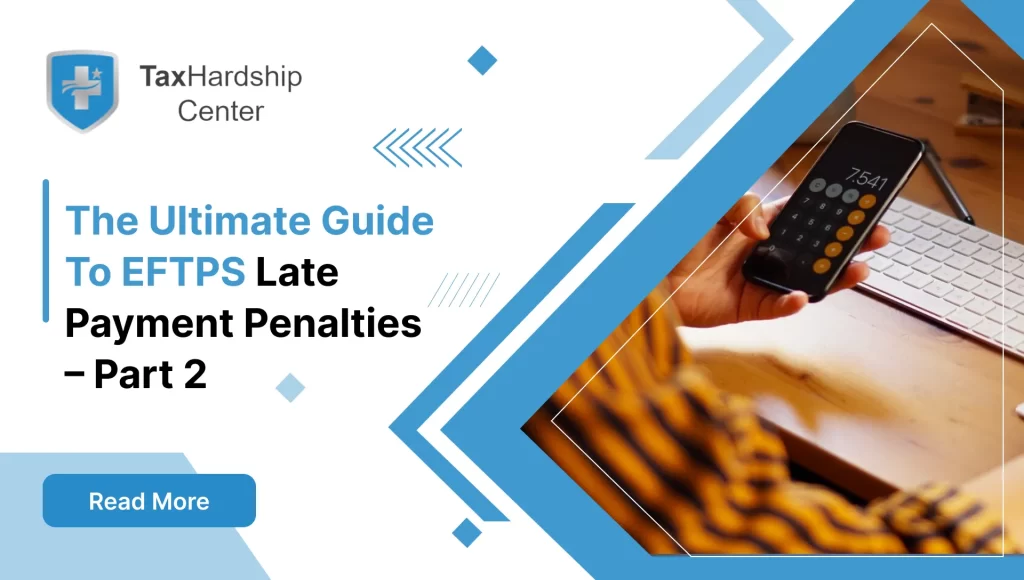Are you feeling overwhelmed by outstanding tax debt and its associated stress? You’re certainly not alone, but there is a glimmer of hope that is the relief you need. The IRS Fresh Start Program is designed to help individuals like you get back on track with your taxes in a manageable way for your financial situation.
Securing the Fresh Start Program approval can be life-changing, but the application process may seem daunting. Fear not, because this blog post is dedicated to demystifying the process and providing you with actionable tips that will help you maximize your chances of approval. Whether you’re an individual taxpayer or a small business owner, these insights are tailored to guide you through the program’s intricacies and put forth a compelling case to the IRS.
From understanding the eligibility criteria and gathering the necessary documentation to crafting a persuasive application highlighting why you are the perfect candidate for the program, we’ve got you covered. So, buckle up and prepare to embark on a journey that could lead to a fresh financial start. Keep reading to discover invaluable tips to increase your chances of successfully navigating the IRS Fresh Start Program application process.
Get a Fresh Start on Taxes with Help from the Pros
Need help with tax debt? The Tax Hardship Center has your back, making sense of that IRS Fresh Start Program. Forget about the sleepless nights; our team has the know-how to get your application spot-on.
Why Choose Us for Your Fresh Start?
You’ve got nothing to lose with our 14-day money-back guarantee. Need to be more thrilled with what we do? You’ll get your cash back, no questions asked. Come chat with us for free, and we’ll show you how we can get your taxes back on track. It doesn’t matter where you are in the States; we’re here to lead you out of the tax maze and into the clear.
Checking Your Eligibility for the Program
The program’s primary goal is to help taxpayers pay their taxes due to financial difficulties or other obstacles.
- Current Financial Status: The IRS considers all aspects of your current financial status, such as assets, expenses, and income. Comprehending and recording your financial situation is crucial for evaluating your eligibility.
- Ability to Pay: The IRS assesses your ability to pay the due taxes. You could be eligible for the program if your financial situation is such that you cannot pay your taxes in full.
- Compliance in Filing: You must ensure your tax filings are current. To be eligible for the Fresh Start Programme, the IRS usually asks that you have submitted all necessary tax returns.
- Understanding Collection Options: Determine whether appropriate collection alternatives, including installment contracts or an offer in compromise, are available, given your financial situation.
- Length of Tax Liability: The IRS Fresh Start Application usually considers your tax debt’s age. Different qualifying requirements or treatment may apply to older tax liabilities.
Gathering Essential Financial Documentation
The collection of vital financial documents is one of the necessary and fundamental things that one has to do before the process for the IRS Fresh Start Program begins. It is essential as it is the basis for your application, and it helps to ensure transparency and compliance with the strict needs of the program. To this end, we offer a list of the necessary financial records you are mainly required to present.
First, start with your income documentation, which forms the bedrock of the entire application process. Obtain your latest pay slips, W-2 files, and any 1099 forms representing further income sources. It is vital to include profit and loss statements and records of business income for a more complete picture of your earnings when one is self-employed.
You must ensure your tax filings are current to be eligible for the Fresh Start Program. Hence, obtaining duplicates of your lodged tax returns for the past few years should form part of this documentation. This proves you are compliant and evinces your willingness to pay taxes.
Keep track of how much you spend every month after your income, such as specific information about housekeeping costs, transport, grocery, and other recurring spending. Your expenses are highlighted in great detail, which is essential for evaluating your financial status. This is important since assets account for a significant part of the assessment. Gather information concerning your real estate properties, vehicles, bank accounts, and investments. The IRS uses this complete list of items as a quick view of your finances, so the ability to pay back is checked.
Include a record of all your remaining debts and liabilities to give a complete financial picture. This might include loans, credit card debt, and other financial commitments that make up your total debt load. Having such transparency makes creating a practical payback schedule easier. Bank statements are physical evidence of your financial dealings.
Giving up-to-date statements helps with a thorough evaluation since it provides information about your expenses, cash flow, and any changes in your financial status. Get supporting paperwork, such as medical bills, job loss notices, or any other proof demonstrating your difficulties if you apply for the program due to financial hardship. This extra layer of evidence enhances your application for IRS fresh start application eligibility.
Addressing Tax Liens and Levies
The tax lien is a legal claim the government creates against your house or other properties if you don’t pay your taxes. These may make it difficult for you to sell some assets. You are handling tax issues under the Fresh Start program. Obtain a copy of your credit report and check for any existing liens. Once identified, consider the following steps:
- Payment Plans: The IRS offers fresh start programs that assist in creating workable payment plans. In this case, negotiating a payment plan for tax debts can make it possible to remove the lien after sticking to the conditions.
- Offer in Compromise: Those individuals struggling financially would do well to investigate the possibility of OIC. OIC allows you to resolve tax debt and lien by paying less than the amount owed.
- Release of Lien: The IRS typically removes this lien after paying for all your taxes owed. The lien should be successfully removed only after ensuring that all payment obligations are made on time.
However, tax levies are much worse than tax liens; they take your property to pay your tax debt. Prompt handling of levies ensures the protection of assets. Consider the following strategies:
- Negotiation for Release: If you show that the levy causes economic hardship, the IRS might agree to release the levy. It also helps to give evidence about your financial status and try a new option.
- Installment Agreements: Payments through an installment plan are preferable to levies, as they lead to a systematic repayment arrangement. There must be no future levies if one consistently adheres to the agreement.
- Seek Professional Guidance: While one can handle the tax liens and levies themselves, one should seek the services of a competent professional. The tax professionals or legal experts can help you through the negotiation process while ensuring that the IRS rules are kept within limits.
Choosing the Right Application for IRS Fresh Start Program: A Comprehensive Guide
When considering relief from tax troubles through the IRS Fresh Start Program, selecting the appropriate application is crucial for a successful journey toward financial recovery. Here’s an insightful guide to help you navigate the application process effectively.
1. Assess Your Eligibility
Before applying, evaluate your eligibility for the Fresh Start Program. Consider factors such as your current financial status, ability to pay, compliance in filing, collection options, and the age of your tax liability. Understanding these aspects ensures you meet the program’s criteria.
2. Identify Your Tax Situation
The IRS Fresh Start Program offers different solutions depending on your tax situation. Determine whether you need help with installment agreements, offers in compromise, or other relief options. Your specific tax circumstances will guide you to the most suitable application.
3. Form 9465 for Installment Agreement
If you seek a manageable way to pay off your tax debt over time, Form 9465 is the key. This application requests an installment agreement, allowing you to make regular monthly payments. Carefully fill out the form, providing accurate financial details to support your proposed payment plan.
4. Form 656 for Offer in Compromise
For those facing significant financial hardship, Form 656 is critical. This application is used to apply for an Offer in Compromise (OIC), wherein you can settle your tax debt for less than the total amount owed. Detail your financial situation thoroughly to present a compelling case for the IRS to consider.
5. Form 433-A or 433-F for Collection Information Statement:
You’ll likely need to submit a Collection Information Statement when applying for specific relief options, such as an Offer in Compromise or Currently Not Collectible status. Depending on your circumstances, you may use Form 433-A (for individuals) or 433-F (for businesses) to provide a comprehensive overview of your financial situation.
6. Form 13844 for Application Fee Waiver
Sometimes, the IRS may require an application fee for the Fresh Start Program. If paying the fee presents a financial burden, consider filing Form 13844 to request a waiver. This form ensures that your financial hardship is considered, potentially saving you from additional financial strain.
7. Seek Professional Assistance
Navigating IRS applications can be complex, and professional guidance can significantly enhance your chances of success. Consider contacting tax experts or services like Tax Hardship Center to ensure your application is accurate, complete, and aligns with IRS specifications.
Avoiding Common Application Mistakes
It is crucial to avoid typical mistakes to ensure a smooth and successful route towards financial relief. Here, we go into a thorough tutorial on avoiding these application errors:
- Lack of Understanding of Eligibility: One of the main errors applicants make is needing to comprehend the requirements for eligibility fully. You may start the application procedure by carefully reviewing the program criteria. Check if they meet the standards for the quantity of unpaid taxes, financial hardship, and timely filing of tax returns.
- Hasty Submission: A standard error is sending the application before carefully reviewing it. Take time to go through everything that has been provided to ensure it is correct and complete. As such, well-prepared applications have a better likelihood of acceptance.
- Incomplete Financial Documentation: The IRS Fresh Start Programme requires detailed, accurate financial documentation. Failing to submit all the necessary documentary support for applications may lead to delays or rejection. Ensure you have everything ready for an in-depth assessment, such as tax returns, revenue documents, expenditure records, etc.
- Avoiding Filing Compliance: Applicants should also have a recent tax filing for an individual to qualify for the program. A common mistake is failing to submit unsubmitted tax returns. Ensure that all tax filings are current before submission to avoid problems and the application being rejected.
- Neglecting Interaction with the IRS: There must be open and candid communication with the IRS. Ignoring IRS contact and not providing information in due time can be challenging. Demonstrated collaboration, attentiveness, and involvement through the application process.
- Ignorance of Tax Liens and Levies: If tax liens or levies are imposed on you, swift action must be taken immediately. These defects may slow down the processing of the application and even lead it to denial if not ignored. Make plans to handle liens and levies, and ensure you have done everything right before filing your application.
- Absence of Moral Expert Advise: Using the IRS Fresh Start Programme without professional assistance is a common mistake. The experts in taxation and finance can provide critical perspectives and ensure that your application is correct, complete, and within the IRS specifications.
Final Overview – Monitoring and Maintaining Compliance
Compliance requires timely filing of taxes, following suggested payback schedules, and maintaining open lines of contact with the IRS. Deal proactively with any changes in your financial situation, and reply to IRS correspondence as soon as possible. Maintaining strict compliance validates your dedication and ensures your Fresh Start experience is a success.
At Tax Hardship Center, we recognize that each individual’s financial situation is unique. Our tailored approach involves thorough analysis, careful documentation, and strategic planning to comprehensively and accurately represent your case. Whether you’re facing tax liens, struggling with eligibility requirements, or seeking ongoing support post-approval, our experts guide you through every step.
Embark on your journey to financial recovery with Tax Hardship Center – your trusted partner in navigating the complexities of the IRS Fresh Start Program. Contact us for a FREE CONSULTATION today to help you secure a brighter financial future.
Frequently Asked Questions (FAQs) – IRS Fresh Start Program Application
Q1: What is the IRS Fresh Start Program?
A1: The IRS Fresh Start Program is an initiative to help taxpayers facing financial difficulties by providing relief options for settling tax debts. It includes installment agreements, offers in compromise, and other solutions.
Q2: Who is eligible for the Fresh Start Program?
A2: Eligibility is determined based on various factors, including financial status, ability to pay, compliance in filing, and the age of your tax liability. Those unable to pay their taxes in full may qualify.
Q3: How can I settle my tax debt for less than the total amount owed?
A4: To settle tax debt for less, you can apply for an Offer in Compromise (OIC) using Form 656. This option is available for individuals facing significant financial hardship.
Q4: What is a Collection Information Statement, and which form should I use?
A: A Collection Information Statement provides a comprehensive overview of your financial situation. Use Form 433-A (for individuals) or 433-F (for businesses) for relief options like OIC or Currently Not Collectible status.
Q5: Is there an application fee for the Fresh Start Program?
A: In some cases, an application fee may be required. If paying the fee is a financial burden, you can file Form 13844 to request a waiver based on your financial hardship.
Q6: How long does the IRS process Fresh Start Program applications take?
A: Processing times can vary, but the IRS generally aims to review applications promptly. Factors such as the complexity of your case and the relief option chosen can influence the processing duration.
Q7: What should I do if I make an error on my application?
A: If you discover an error on your application, it’s crucial to address it promptly. Contact the IRS or seek professional advice to rectify the mistake and prevent delays in processing your application.
Q8: Can the Fresh Start Program help with tax liens and levies?
A: The program offers solutions for handling tax liens and levies. Negotiating payment plans, applying for an OIC, or seeking professional guidance are viable options to address these issues under the Fresh Start Program.
Q9: Does the Tax Hardship Center offer ongoing support after the Fresh Start Program approval?
A: Absolutely. We provide ongoing support to ensure compliance with the program’s requirements. Our experts help you navigate the post-approval phase, ensuring a successful and stress-free experience.
Q10: Can I contact the Tax Hardship Center for questions about the Fresh Start Program after approval?
A: Yes, we encourage open communication. Feel free to contact the Tax Hardship Center for post-approval queries or concerns. Our team is dedicated to providing comprehensive support throughout your Fresh Start journey.








